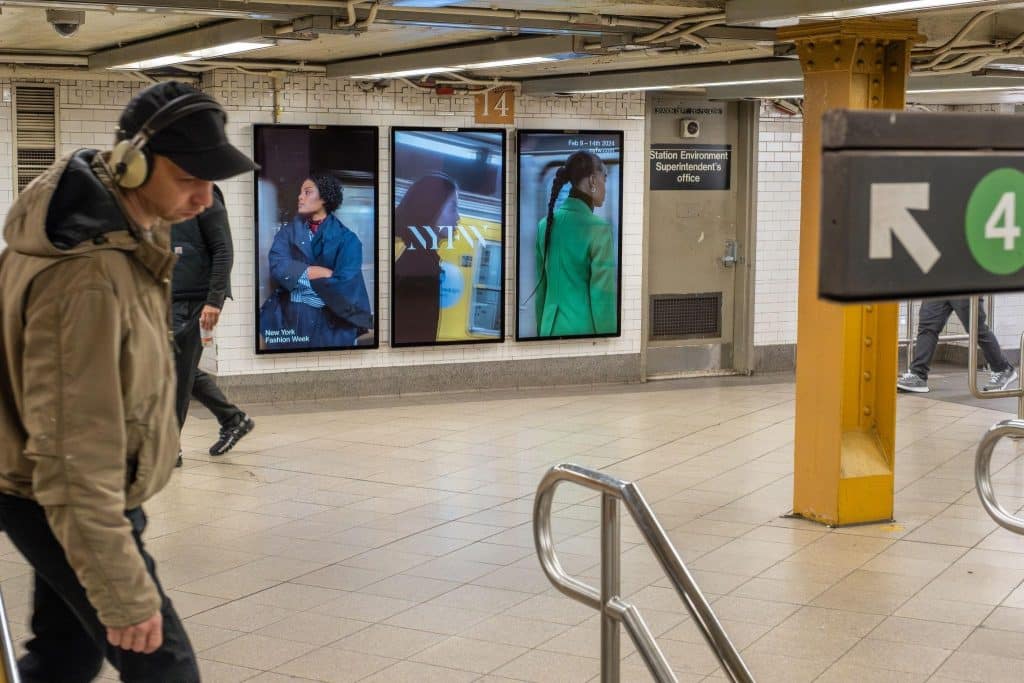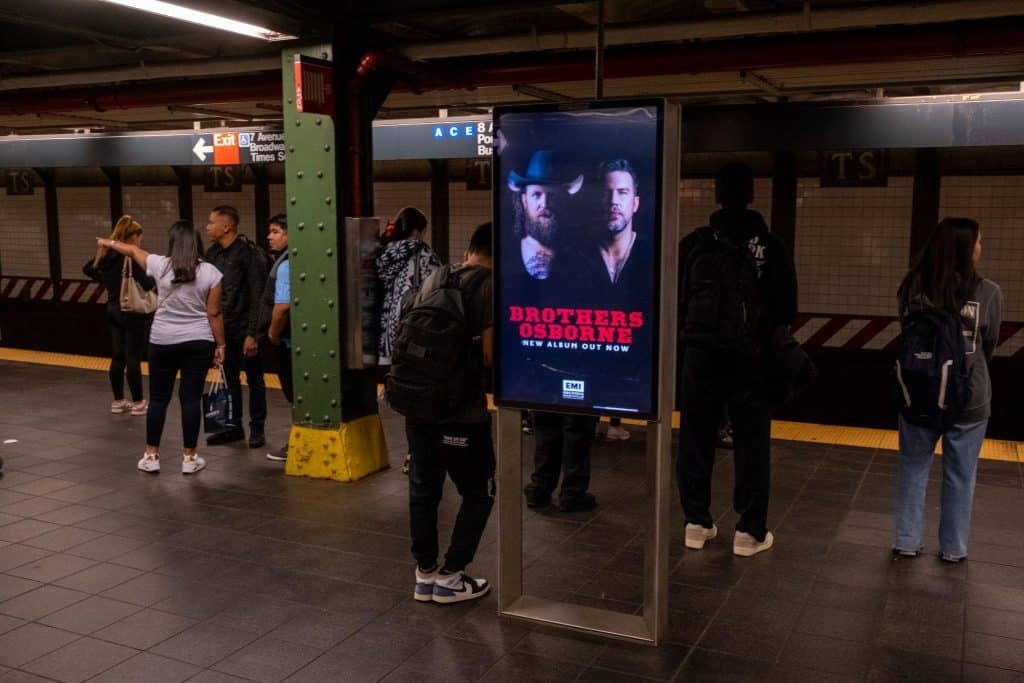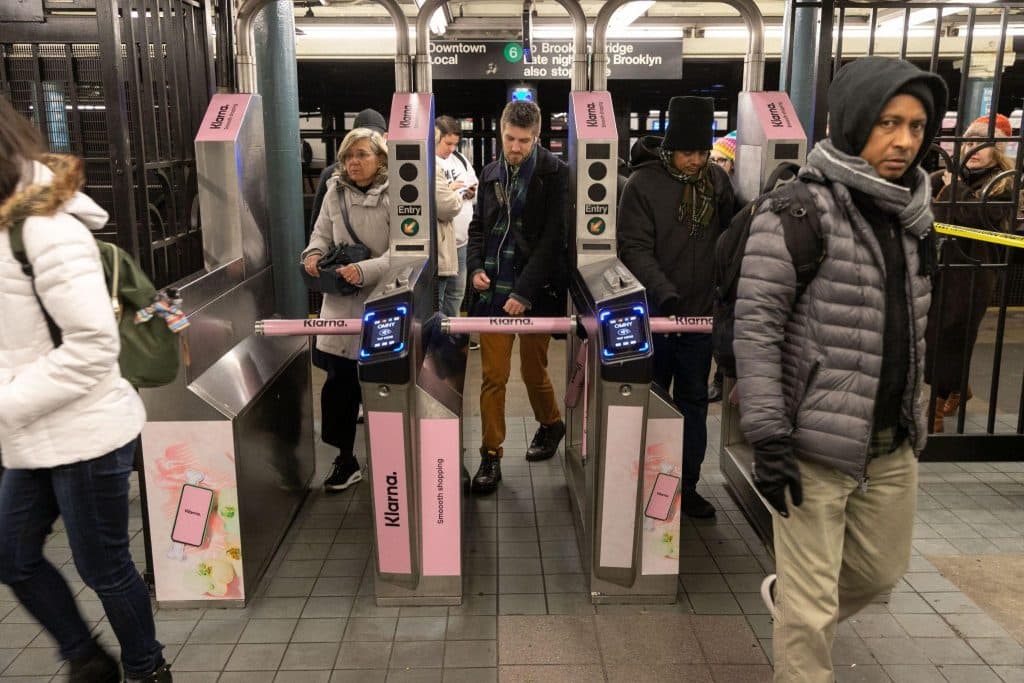Following a blip during the pandemic, when public transit systems first shut down and then imposed masking and social distancing regulations that discouraged many from riding, subway ridership has largely returned to pre-COVID-19 levels.
Millions of people commute to work on the subway each day in the United States, according to the U.S. Census Bureau, and many more take the underground rails, whether it’s tourists wandering around a new city, locals who want to avoid traffic pileups, or sports fans who love comparing stats with fellow fanatics on the way to the game.
Whatever passengers’ reason for taking the subway, it offers an incredible way to advertise. The cars, stations and entry points provide an engaged audience who look around them for information and absorb the ads promoting music, art, beauty products, sales and more.
This guide includes information about the top 25 North American and international subway markets for advertising, as well as tips for how to advertise on subways.

Why Advertise on Subways?
Subways offer a large captive audience of active people. They are standing around the station or sitting in the subway, creating lots of dwell time to connect using advertisements. The audience tends to be diverse, and you can target by neighborhood for subway stations and by rider demographics for trains.

Types of Subway Advertising
You can choose from many types of subway advertising, including:
- Urban panel: An ad placed outside the subway station that targets passersby as well as passengers.
- Platform posters: The ads you see on the walls of a subway station, also sometimes called one- or two-sheets.
- Posters: Individual ads located on subway card exteriors.
- Train wrap: An ad covering the entire exterior of a subway car, one of the most visible ad formats.
- Brand train: A step beyond a train car wrap, which includes wrapping the entire train with advertising.
- Floor graphics: Ads on the floor of a subway car or subway station.
- Interior cards: Ads inside the train, usually located above the seats.
- Liveboards: Digital boards on the platform that display information about coming trans as well as ads.

5 Tips for Effective Subway Advertising
Here are five ways you can get the most value out of a subway advertising campaign.
- Make it part of a greater outdoor campaign. You will reap better results when you pair subway ads with other outdoor elements, such as billboards or street furniture.
- Target wisely. Financial districts aren’t seeing quite the commuter traffic they used to with more people working from home. Analyze your goals and target based on the most recent ridership data available (anything prepandemic isn’t useful).
- Think about your audience. Many of the people who see your ad will see it daily—they get on the same train to commute to and from work. Tailor your creative by taking frequency of viewing into account.
- Negotiate on price. Arm yourself with information to argue for the price you’re willing to pay—or connect with an agency like us that can do it for you.
- Take advantage of the great creative potential. Have fun with this format. Subway advertising offers so many waypoints into truly clever advertising that can play off elements of the subway or the commuting experience.
Top 25 Cities for Subway Advertising
Here’s an overview of the 25 best U.S. and international locations for subway advertising.
1. New York City
The country’s largest subway system by ridership offers everything from train wraps to station dominations that include covering almost every inch with advertising. Fast fact: Scarborough Research found that post-pandemic NYC subway riders are younger and more affluent than pre-COVID riders.
Metropolitan Transportation Authority
2. Los Angeles
LA Metro advertising offerings include traditional options as well as naming for stations, parking lots, experiential activations, farecards and much more. Fast fact: The 98 miles of metro service reach 2.1 million LA residents monthly.
3. San Franciso
BART has added digital displays in San Francisco and Oakland as well as San Jose, and it also has street team activation options. Fast fact: Categories that advertise on BART most frequently include tech (Silicon Valley, duh), fashion, health care, education, tourism, entertainment and events.
4. Chicago
Chicago Transit Authority opportunities include one- and two-sheets, farecards, door wraps, platform displays and more. Fast fact: The most recent monthly ridership report for 2023 in Chicago found that rail ridership was up by more than a million, to 11.5 million per month.
5. Philadelphia
Philadelphia utilizes a number of traditional subway ad formats, including interior and exterior vehicle advertising and car cards, plus digital displays, station dominations and naming rights. Fast fact: Transit advertising reaches 98% of Philadelphia residents each week.
Southeastern Pennsylvania Transportation Authority (SEPTA)
6. Washington, D.C.
Washington Metropolitan Area Transit Authority’s Metro is known for cleanliness, orderliness and ease of use. Ad opportunities include inside Metro cars as well as backlit advertising displays and two-sheet poster displays. Fast fact: One of the peak weekend ridership times for Metro is during spring cherry blossom season.
7. Boston
Digital signage, car wraps and station takeovers rank among the most popular forms of subway advertising in Boston. Fast fact: More than 1 million people ride Boston subways daily.
Massachusetts Bay Transportation Authority
8. Atlanta
Exterior and interior rail ads are available in Atlanta, including full-train wraps and king-size panels. You can also take over a station with elevator wraps, ceiling banners and floor graphics. Fast fact: The city has 48 miles of rapid transit rail, and about 500,000 use the service daily.
9. Miami
Miami offers many of the traditional subway advertising platforms, plus it introduced digital kiosks in 2016 at its metrorail stations that include advertising. Fast fact: Miami has been in the news lately thanks to plans to introduce digital advertising on the columns supporting the local metrorail system.
10. Honolulu
The nation’s most recently opened subway in a major city operates in Honolulu and began carrying passengers in 2023. Advertising inventory is evolving, providing a great way to get in on the ground floor. Fast fact: The rapid transit system is located above ground-level congestion rather than below it (hence the name “Skyline!”).
11. Lindenwold, N.J.
Located outside Philadelphia, Lindenwold is home base to one of the most in-demand non-metropolitan subway systems. Advertising options are handled through a third party, Intersection. Fast fact: PATCO is one of six rapid transit systems in the U.S. that operates 24 hours per day.
12. Baltimore
The Baltimore Metro Subway Link has a variety of options available, and the Maryland Transit Administration will work directly with advertisers to find unique ways to connect with the audience. Fast fact: Ridership on the subway is just shy of 2 million on weekdays.
13. San Juan
Puerto Rico Highway and Transportation Authority (PRHTA) oversees Tren Urbano, which has 16 stations and 74 rail cars. The Authority also handles advertising opportunities. Fast fact: While the majority of the system is elevated, like in Honolulu, there is a 1.1-mile underground in Rio Piedras.
14. Tokyo
Digital advertising on LCD trains has become popular in Tokyo, complementing the train exterior and interior options as well as station advertising. Fast fact: Almost 7 million riders use the Tokyo subway daily.
15. London
Advertising options for the Underground in London include full-motion video, and Global, which handles all Underground advertising, says studies have found improvements in foot traffic and brand engagement among Underground advertisers. Fast fact: The subway hosts 5 million daily trips.
16. Berlin
Advertising space on the wall behind trains is a popular option in Berlin, which runs 10 lines and 173 stations, with tracks located mostly underground. Fast fact: About 1.5 million people use the Berlin subway daily.
17. Madrid
JC Decaux, which manages the advertising network for subway advertising in Madrid, has begun installing digital screens in more than 100 stations across the city. Other traditional options are also available. Fast fact: Madrid Metro ridership rose 15% in 2023, to more than 662 million.
18. Barcelona
In addition to more than 2,000 supports throughout the subway lines where advertisers can solicit, the Barcelona subway recently began a dynamic opportunity that reproduces the effects of commercials. Fast fact: The eight Barcelona lines hosted more than 440 million trips in 2023.
19. Paris
In Paris, you can book the entrance to the local Metro, back banners on the train, inside banners on the train, ads on the platform and much more. Fast fact: The minimum booking for most ad formats is seven days.
20. Beijing
The world’s busiest subway system has become known for campaigns that go viral—from illuminated ads in tunnels during the early 2010s to cyberpunk vibes of more recent ones that make a splash on Reddit. You’ll find one of the most extensive advertising inventories in Beijing. Fast fact: The system has a stunning 490 stations.
21. Shanghai
The Shanghai subway advertising options run from the traditional, such as posters, to the more innovative, like tunnels lined with LCD screens and food vending machines loaded with ads. Fast fact: Shanghai has the world’s second-longest subway system at more than 500 miles.
22. Seoul
Seoul has many of the same subway advertising options as the rest of the world, including on station walls—that’s a popular purchase for fan groups who want to wish their favorite K-pop, Korean or sports drama star happy birthday. Fast fact: Seoul was the world’s first subway system to use transparent ad displays.
23. Delhi
Delhi made international headlines last year when it started broadcasting audio ads inside cars—a move firmly rejected by riders. Lesson learned; Delhi is now keeping the vast majority of its ad options visible, not listenable. Fast fact: Trains make more than 4,300 trips per day.
24. Montreal
Montreal has traditional subway advertising options available, including attractive backlit station posters and sleek station wraps, plus a network of Metrovision digital screens. Fast fact: Montreal boasts North America’s third-busiest subway system, behind Mexico City and New York City.
25. Mexico City
While you can pursue the traditional subway advertising options on the Mexico City Metro, you can also negotiate special approaches. For instance, in a campaign a few years ago, the JUNTOS campaign had screens placed in subway stations so riders could watch the group’s video. Fast fact: Daily ridership on the Mexico City Metro is more than 4.5 million.
How to Advertise on Subways
The best way to advertise on subways is to use an agency like us that has experience dealing with the local transit authority and vendors who sell the subway ads. We can get better prices and placement because we can leverage our client base and we have existing relationships with these places.
Contact us today to discuss subway advertising opportunities.

